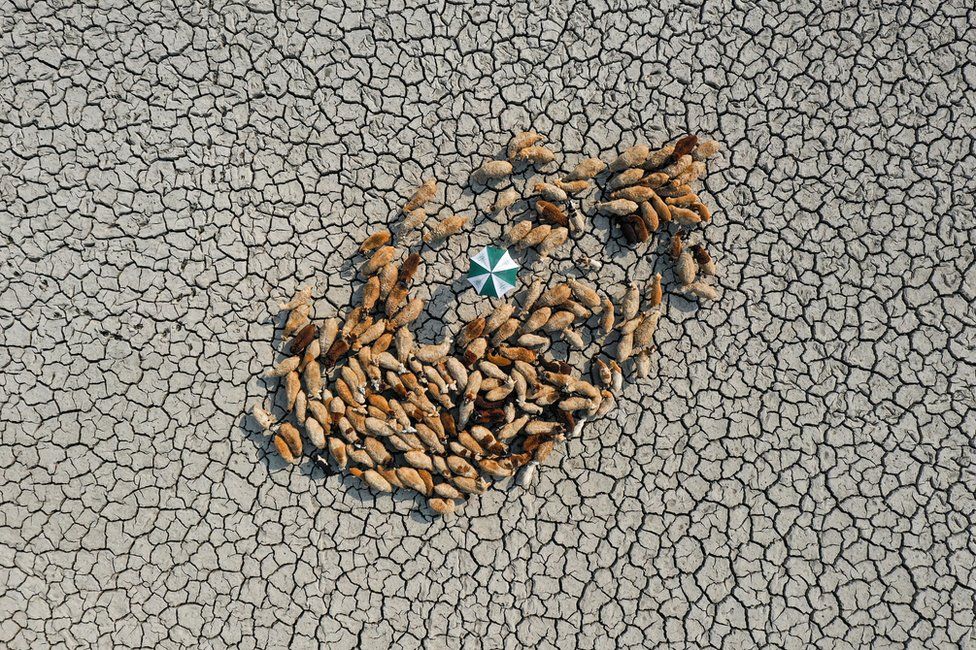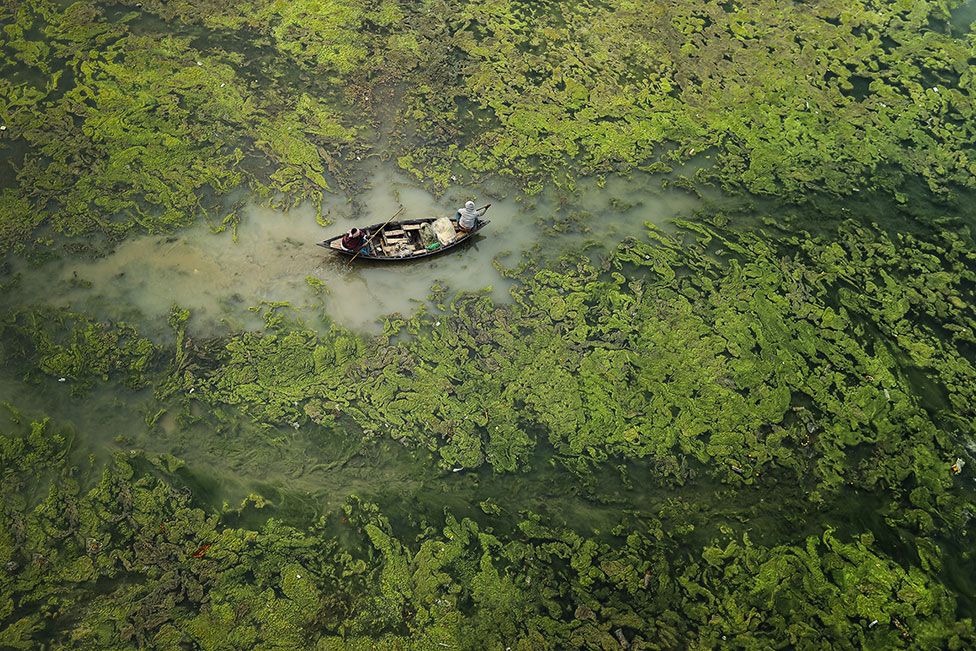Spanish photographer Antonio Aragón Renuncio has won Environmental Photographer of the Year 2021 for his photo of a child sleeping inside a house destroyed by coastal erosion on Afiadenyigba beach in Ghana.
The image, entitled The Rising Tide Sons, highlights the rising sea levels in West African countries, which are forcing thousands of people to leave their homes.
Mr Renuncio receives £10,000 prize money.
The Environmental Photographer Of The Year competition, now in its 14th year, showcases some of the world’s most inspirational environmental photography.
The award celebrates humanity’s ability to survive and innovate and supports the calls to action in the United Nations Sustainable Development Goals.
The winners of this year’s competition were revealed at the UN Climate Change Conference (COP26) in Glasgow.
Young Environmental Photographer of the Year: Inferno, by Amaan Ali, taken in Yamuna Ghat, New Delhi

“A boy fighting fires in a forest near his home in Yamuna Ghat, New Delhi, India.”
The Resilient Award: Survive for Alive, by Ashraful Islam, taken in Noakhali, Bangladesh

“Flocks of sheep search for grass amongst the cracked soil.
“Extreme droughts in Bangladesh have created hardships for all living beings.”
Sustainable Cities winner: Net-zero Transition – Photobioreactor, by Simone Tramonte, taken in Reykjanesbær, Iceland

“A photobioreactor at Algalif’s facilities in Reykjanesbaer, Iceland, produces sustainable astaxanthin using clean geothermal energy.
Climate Action winner: The Last Breath, by Kevin Ochieng Onyango, taken in Nairobi, Kenya

“A boy takes in air from the plant, with a sand storm brewing in the background, in an artistic impression of the changes to come.”
Water and Security winner: Green Barrier, by Sandipani Chattopadhyay, taken at Damodar river, West Bengal, India

“Irregular monsoon seasons and droughts cause algal bloom on the Damodar river, India.
“Algal blooms prevent light from penetrating the surface and prevent oxygen absorption by the organisms beneath, impacting human health and habitats in the area.”




